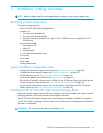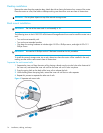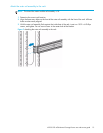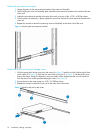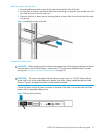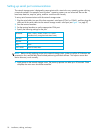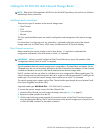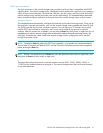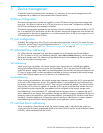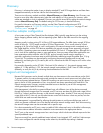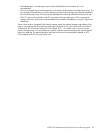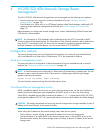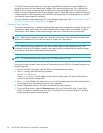
N1200-320 4Gb Network Storage Router user and service guide 21
Serial port connection
The 3-pin connector on the network storage router provides a serial port that is compatible with RS-232
signaling levels. The network storage router is designed to communicate with a terminal or any operating
system using a terminal emulator. The baud rate, data bits, stop bits, parity, and flow control of both the
network storage router and the host system must use the same settings. The Autobaud feature described
below provides an effective method to set the baud rate of the network storage router and host system.
Autobaud feature
The Autobaud feature automatically configures the baud rate on the network storage router. Once you set
the baud rate in the terminal emulator, wait until the network storage router completes the Power-On Self
Test (POST) and then the firmware initialization process. This can take up to 90 seconds, during which
time the POST and initialization information may or may not be visible on the terminal or terminal
emulator. After this process has completed, you can press the Enter key slowly seven or eight times (or just
type shift-z) and the network storage router automatically detects the baud rate being used by the
serial port. The baud rate is then saved in the network storage router’s configuration and is retained
through future power cycles.
NOTE: Pressing the Enter key before the POST has completed is of no benefit to the Autobaud feature.
Wait at least 90 seconds until both the POST and the firmware Initialization processes have completed
before pressing the Enter key.
NOTE: If there is no response using the Enter key, press the space bar slowly seven or eight times, and
then press the Enter key slowly seven or eight times.
The baud rate used by the terminal or terminal emulator must be 9600, 19200, 38400, 57600, or
115200 for the Autobaud feature to recognize it. The network storage router does not function properly
at any other baud rate.



